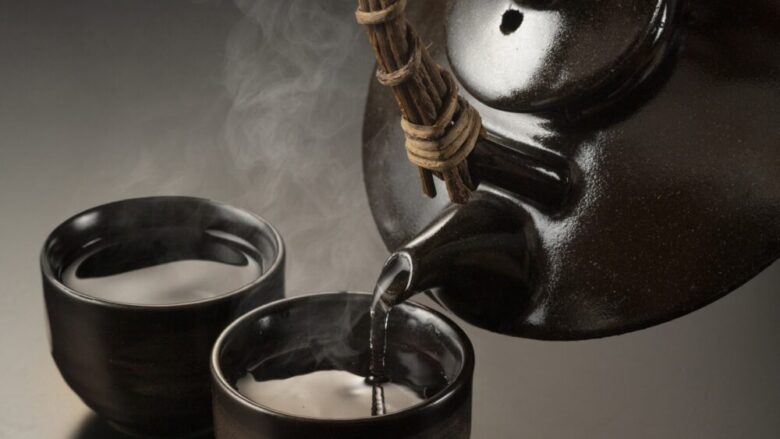Welcome to the vibrant world of Kyushu which is sake paradise! Prepare your taste buds for an exquisite journey into the realm of sake, Japan’s delightful traditional drink. In this post, we’re all about exploring Kyushu’s sake culture, a secret treasure trove for sake lovers worldwide.
The History of Kyushu's Sake and Shochu
In Japan, the exact historical evidence of when the sake culture began is unclear, and there are various theories about its origins. However, the oldest recorded evidence dates to around seven hundred in Kagoshima Prefecture, where “kuchikami-zake” (mouth-chewed sake) was made. This kuchikami-zake, made from rice, is said to be the origin of the sake known as “nihonshu” (Japanese sake).
Also, in Kyushu, the culture of making “shochu” using ingredients other than rice is extremely popular, and about half of the shochu produced in Japan is produced in Kyushu. The record of Portuguese people drinking imo-jochu (sweet potato shochu) in Kagoshima in 1546 is considered evidence that the culture of shochu was already established in Kyushu at that time.
The production of shochu using locally available ingredients such as sweet potatoes and barley became more popular than using rice, which was an expensive ingredient. Additionally, there are records indicating that beer was introduced to Nagasaki from the Netherlands during the 1600, while Japan was in a period of isolation.
Kyushu is known for its shochu production
What could be the reason for the particularly active shochu production in Kyushu in Japan?
Climate and Geographic Features
It is said that the distillation of liquor, which was introduced from overseas, spread to Kyushu via Okinawa in Japan. This culture of shochu production has been established since the 14th century, with various updates over time.
One significant reason for this is said to be the presence of “black koji,” which has traditionally been used to ferment raw materials in shochu production. Black koji is known to grow vigorously in warm places and can produce citric acid even in warm conditions, suppressing the proliferation of bacteria.
On the other hand, “yellow koji,” which is used in sake production, does not ferment well in warm regions, so it can be said that shochu culture was more likely to take root in Kyushu.
Abundant Raw Materials for Shochu
The main raw materials for Japanese shochu are sweet potatoes and barley, both of which are abundant in Kyushu.
Kagoshima Prefecture accounts for over 30% of Japan’s sweet potato harvest, and Miyazaki Prefecture boasts a share of over 10%, making up about half of the total harvest in Kyushu.
It could be debated whether the abundance of raw materials led to the active shochu production in Kyushu, but there is no doubt that the abundance of raw materials played a significant role.
Tips for Exploring Sake Breweries in Kyushu

We at INAKAdventure recommend exploring sake breweries in Kyushu for the reasons mentioned above. Here are some tips for embarking on an exciting journey to visit captivating sake breweries in Kyushu.
Kyushu is home to numerous respected sake breweries, each with its own unique charm. From historical facilities to modern establishments, there is a rich diversity that promises exciting tours. However, when visiting these breweries, be sure to book a guided tour. This is because some breweries may not provide English-speaking guides on site, and even if they do, the information may be significantly simplified compared to the Japanese version.
By visiting with a knowledgeable local guide, you can not only catch a glimpse of the brewing process behind the scenes but also learn about the rich history and cultural significance of each brewery.
Enjoying Japanese Culture Surrounding Sake in Kyushu
The sake culture of Kyushu is vibrant, rooted in traditional customs, and enriched by modern influences. Delving into this captivating world, you will encounter historical rituals such as the traditional “kagami-biraki,” where sake barrels are broken open for celebratory occasions.
The time of the sake festivals in Kyushu is truly spectacular. Residents and tourists gather, creating an atmosphere of shared love for Japanese sake. These festivals are not just about sake; they vividly highlight the rich tapestry of Kyushu’s culture.
It is impossible to discuss Japanese sake culture without including food. The diversity and freshness of Kyushu’s cuisine are exceptionally well-paired with Japanese sake. As you explore, you will discover the art of sake pairing, where the right dish can elevate the sake experience to new heights.
Finally, we share our subjective experiences and recommendations. We have been privileged to immerse ourselves in the enchanting world of sake in Kyushu, savor its flavors, and absorb its culture. The warmth of the people, the richness of tradition, and of course, the sacred taste of Japanese sake makes this journey truly worthwhile.
Let's Fully Enjoy the Sake Culture of Kyushu
The sake culture of Kyushu is a fascinating realm where the past meets the present, and tradition blends with innovation.
Deeply rooted in history and forward-looking, the sake breweries of Kyushu are a testament to the resilience and passion of this region. Embarking on a journey through Kyushu’s alcoholic delights has not only led to the discovery of the unique flavors of sake but also to a deep exploration of the rich cultural heritage of this region.
We hope that your own adventure becomes an opportunity to directly experience the magic of Kyushu’s sake paradise.
So, let’s raise a toast to Kyushu, its wonderful sake culture, and the joy of exploration! Cheers to embarking on a captivating journey into the world of Japanese sake!





